Invest
What are the different types of shares?
Navigating the stock market can be difficult for beginners, especially since there are different types of shares in existence. Here’s a quick guide to the types of shares present in the stock market.
What are the different types of shares?
Navigating the stock market can be difficult for beginners, especially since there are different types of shares in existence. Here’s a quick guide to the types of shares present in the stock market.

Potential investors in the stock market must be equipped with basic knowledge about the types of shares available for trading.
Learning about the share market is a necessary step to begin investing in it— at least if professional management is not an option.
Here’s a quick guide on stocks and the types of shares traded in the stock market.
Types of company shares
Companies issue shares to raise capital for funding business objectives. Each type of share has a different purpose, and the conditions for owning them vary.

There are five types of shares companies are allowed to have: authorised, restricted, float, unissued and outstanding. These are explained below:
Authorised shares: the total number of shares companies are allowed to have. This number was determined prior to the initial public offering and it usually does not change unless voted on by relevant parties.
Restricted shares: as its name suggests, restricted shares are stocks intended only for the company’s owners (i.e., founders) and employees. This may be given as an incentive or as part of the employment package, and restricted share owners are not allowed to sell the stock they own unless permitted by the Australian Securities and Investments Commission (ASIC).
Float shares: these are shares issued by companies for public trading, which means this is what investors trade in the stock market.
There are different types of float shares which are traded with accompanying conditions and rights for shareholders, but these will be discussed in the next section.
Unissued shares: exactly as its name says, unissued shares have not yet been issued as either restricted or float shares. This may be issued at a later time— perhaps when the company needs to raise funds again—or simply kept in the company treasury.
Outstanding shares: This is the total number of issued shares or the sum of restricted and float shares.
Equity Shares: According to Nestegg, "Equity shares refer to ordinary or common shares issued by the company for public trading. These equity or common shares come with voting right and dividends, but dividend payouts are not always guaranteed and voting rights usually depend on the class of common shares purchased."
Types of shares traded in the ASX
There are four main types of issued shares that investors can trade in the Australian Stock Exchange (ASX) regardless of their expertise in the share market. These are:
Common or Ordinary Shares: As its name implies, these are the most common shares available for trading in the share market. These come with voting rights and right to dividends—if companies pay out dividends.
Potential investors should look into the class of ordinary shares they will purchase and the conditions and rights that come with them. This is important because a different class could mean more voting rights and higher dividend payout priority.
ASX identifies ordinary shares with three-letter company codes, so any code with more than three letters means it is something else.
Preference Shares: These have an advantage over ordinary shares when it comes to earnings because shareholders are top priority when the company pays out dividends. In exchange, preference share owners generally give up voting rights.
Some preference shares qualify as hybrids if owners are allowed to convert them to ordinary shares in the future.
The ASX distinguishes preference shares from common shares by adding a two-letter suffix starting with ‘P’ (PA to PZ) after the three-letter company code.
Contributing or partly paid shares: Think of these as shares on an instalment plan, except owners have no idea when the bill would arrive.
Investors who purchase contributing shares are only required to pay a part of the full amount upon purchase but the balance must be paid at a future date the issuing company decides.
It is best for financially strained investors to avoid gambling by purchasing partly paid shares. he issuing company decides at a later date when they want the full payment, and they are allowed to demand the money immediately once they announce it. If a shareholder can’t pay up by deadline, they may have to forfeit the shares without a refund to their principal investment.
The ASX labels partly paid shares with a five-letter code composed of the three-letter company code, followed by a two-letter suffix starting with ‘C’ (CA to CO and CQ to CZ).
Company issued option: these are options equivalent to a certain number of shares. If an investor purchases an option, they have the right to purchase the number of shares indicated in the option document anytime in the future, as long as they exercise it before the expiration date.
These options indicate the price shareholders must pay so companies must honour the option terms. Companies are also required to issue new shares equivalent to what is written in the option if there are not enough float shares to meet the order.
For example, an issued option from company XYZ states that an individual is entitled to purchase 1,000 common shares for $1,000 until November 15, 2018, and the holder decides to exercise the option on that exact day. Consider that the value of shares increase enough that 100 common shares are already worth $2,000 by November 14, 2018.
Despite the November 15, 2018 conditions, company XYZ is legally bound to do the following:
- Issue 1,000 new shares to give the option holder
- Charge $1,000 for the 1,000 shares because that is what is written in the option
If the situation is reversed and 1,000 shares is just worth $800 when the option is exercised, the holder is still required to pay $1,000 for them.
Options allow its holders some flexibility on when to exercise it, but option holders may want to keep track of the company’s share price to get the best value.
This information has been sourced from ASX and the Australian Investors Association.
About the author

About the author


Shares
DREST gears up for innovation with the appointment of new co-CEO and CTO
Luxury fashion and lifestyle mobile game DREST has announced significant leadership changes as it prepares for an exciting phase of development and expansion. Read more

Shares
Hope for investors scared by share and crypto crashes
As share markets and cryptocurrency take a beating following the tightening of monetary policy across the world, investors are contemplating their next move. Read more

Shares
Cannon-Brookes tries to block AGL demerger
Mike Cannon-Brookes is not giving up on AGL after the latter announced 15 June as the date of the demerger vote. Read more

Shares
Qantas set to acquire Alliance Aviation
The two airlines have entered into a scheme implementation deed. Read more

Shares
Bond and share investors may shrug off RBA’s rate hike
As mortgage holders reel from the prospect of having to reach deeper into their hip pockets to make bigger repayments following the Reserve Bank of Australia’s (RBA) interest rate hike from 0Read more

Shares
How to buy Shares: A beginner’s guide in 2022
So you want to get in on the stock market action? Congratulations, that’s an exciting step! But first, there are a few things you should know before you buy your first shares. Read more

Shares
Elon Musk chokes up on bid to swallow Twitter
The battle of the bird has intensified over the last week, as Tesla and SpaceX founder Elon Musk has ramped up his aggressive campaign to buy the entirety of social media giant, Twitter. Read more

Shares
How to Make Money in Short Selling
What is short selling? There is a common practice for people who actively trade in the stock market, which is to “buy low and sell high”, but what if you can still make money by doing the opposite? Read more

Shares
DREST gears up for innovation with the appointment of new co-CEO and CTO
Luxury fashion and lifestyle mobile game DREST has announced significant leadership changes as it prepares for an exciting phase of development and expansion. Read more

Shares
Hope for investors scared by share and crypto crashes
As share markets and cryptocurrency take a beating following the tightening of monetary policy across the world, investors are contemplating their next move. Read more

Shares
Cannon-Brookes tries to block AGL demerger
Mike Cannon-Brookes is not giving up on AGL after the latter announced 15 June as the date of the demerger vote. Read more

Shares
Qantas set to acquire Alliance Aviation
The two airlines have entered into a scheme implementation deed. Read more

Shares
Bond and share investors may shrug off RBA’s rate hike
As mortgage holders reel from the prospect of having to reach deeper into their hip pockets to make bigger repayments following the Reserve Bank of Australia’s (RBA) interest rate hike from 0Read more

Shares
How to buy Shares: A beginner’s guide in 2022
So you want to get in on the stock market action? Congratulations, that’s an exciting step! But first, there are a few things you should know before you buy your first shares. Read more

Shares
Elon Musk chokes up on bid to swallow Twitter
The battle of the bird has intensified over the last week, as Tesla and SpaceX founder Elon Musk has ramped up his aggressive campaign to buy the entirety of social media giant, Twitter. Read more

Shares
How to Make Money in Short Selling
What is short selling? There is a common practice for people who actively trade in the stock market, which is to “buy low and sell high”, but what if you can still make money by doing the opposite? Read more










